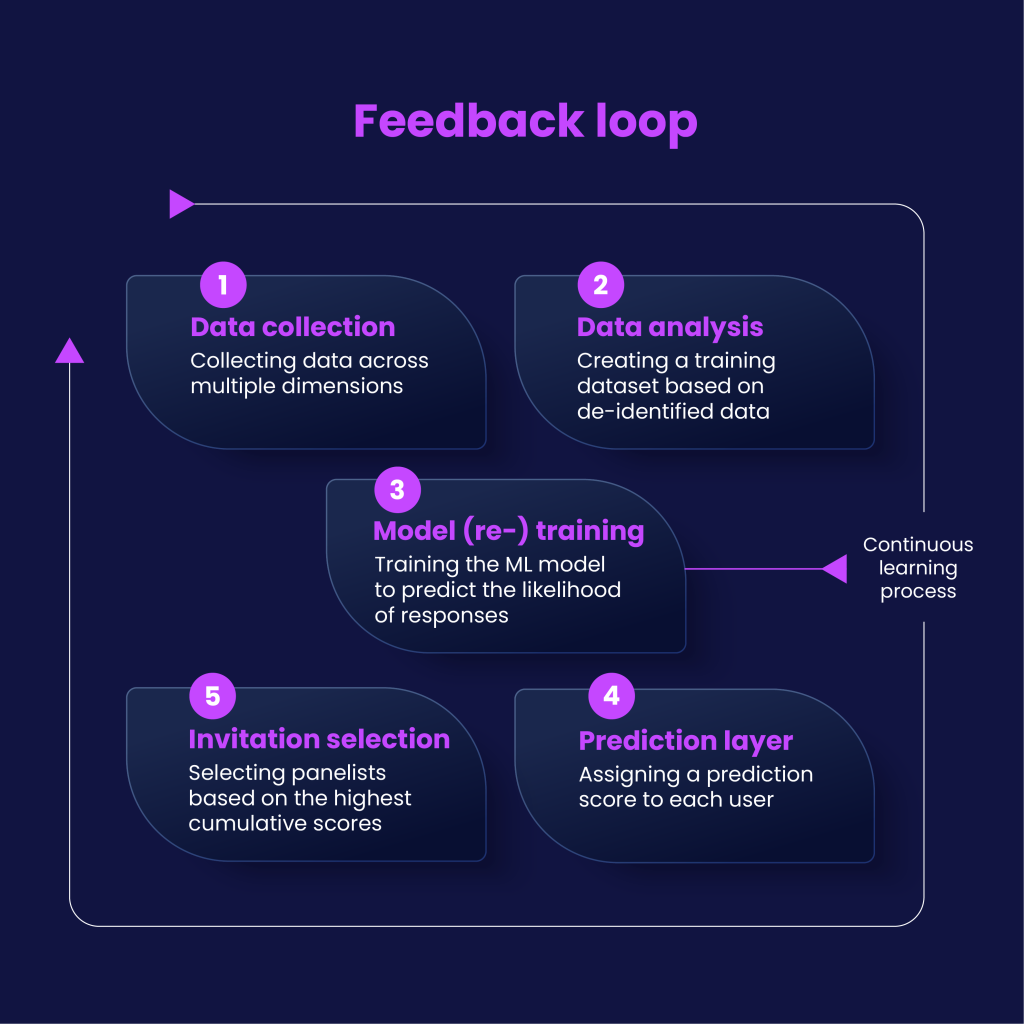Optimizing The Invitation Pool For Healthcare Market Research With AI
AI
Optimizing The Invitation Pool For Healthcare Market Research With AI
Using smart data and machine learning, we helped our client refine their survey invitation process to improve response rates and minimize potential opt-outs.
The Background
Our client, a healthcare market research company, helps pharmaceutical organizations conduct surveys targeting specific audiences for the purpose of improving the efficacy of products.
They were looking to refine the survey invitation process, which relied on sending out a large number of invitations to achieve the required number of responses. That affected the user experience in many ways than one.
To optimize the invitation process, which involves improving response rates and reducing panelist dropout rates, the client was looking for a self-contained solution that balanced effectiveness and engagement.
What We Did
Looking at the challenge of enhancing targeting precision through a data-driven lens, we implemented an AI-powered (Machine learning) solution to predict how likely each panelist was to respond to a specific invitation. Then, we integrated that solution into the larger invitation process.
Here’s a breakdown of the approach we adopted:

Data collection and analysis
We gathered data across four dimensions to train our machine-learning model:
- User dimensions: Personal factors like profession, age, location, and health status
- Response behavior: How quickly users responded in the past and their likelihood of responding now
- Survey dimension: Survey type (e.g., continuous vs. one-time)
- Invitation dimension: Invitation characteristics (e.g., delivery time)
To make sure that the data collection and storage processes are regulatory compliant, we implemented the following measures:
- Role-based access control to limit data access to authorized personnel only
- Secure hosting in HIPAA-compliant cloud environments, as an extra precaution
- De-identification of health-related data to remove any risk of individual identification
Training the model
Using the acquired insights, we built a training dataset to predict the likelihood of a user responding to a survey invitation. The model learned from past behaviors, assigning a score to each user based on their engagement. Over time, this data helped refine predictions based on user behavior trends, with more weight given to recent activity.
Predictive scoring system
We created a machine learning model based on simple yet interpretable linear regression algorithms that assigned each user a prediction score based on their tendency to respond. This, in turn, helped rank the most frequent responders high up on the list of invitees.
So for a survey with a target of 10 responses, instead of sending hundreds of invitations, the model would select the top users whose combined prediction scores met the set requirements.
Testing the solution
Now comes the part where we test everything rigorously and make sure that the solution is glitch-free. This phase is divided into three parts:
- Unit testing: Checking that each component of the system (e.g., data preprocessing, prediction scoring, and invitation selection logic) works as intended.
- Integration testing: Verifying that the components work seamlessly together within the entire system.
- Regression testing: Confirming that updates to the model or system do not introduce new errors.
Optimized workflow
We integrated the model into the invitation workflow in a multilayered CI/CD pipeline approach. This way, data is automatically fed back into the system to retrain the model and refine future predictions.
- Prediction layer: The model was deployed as a REST API service.
- Response scoring: The model assigns a prediction score to each panelist based on their likelihood of responding.
- Continuous feedback loop for retraining data collection: After each survey, data on response rates, timing, and opt-outs are fed back into the system.
- Retraining schedule: The model is retrained periodically.
- Monitoring metrics: Key metrics such as prediction accuracy, response rates, and dropout rates are monitored to identify when retraining is needed.
By collecting feedback after each survey, we ensured the system was always learning from the most up-to-date data to refine its predictions and improve overall performance.
The Results
We delivered the finished product in less than 5 months. With minimal challenges along the way, like cultural adaptation, which was addressed by training the team to trust AI-driven decisions, the solution helped our client achieve quite a few tangible advancements.
- Increased response rates: Response rates improved by 150%, surpassing the industry benchmark by 15 points.
- Reduced invitations: The client could now send invitations to only the panelists most likely to respond, significantly lowering the number of invitations.
- Improved user experience and retention: Panelist satisfaction substantially increased as a result of more targeted invitations, leading to long-term commitment.
By implementing the new AI-powered model, we helped our client engage with the right panelists at the right time and increase response rates while reducing resource wastage. The end result: multi-use high-quality, reliable data and an enhanced panelist experience.
More Insights

AI SERVICES & SOLUTIONS
From supercharging the performance of your business operations and optimizing efficiencies to personalizing experiences, our next-gen AI services & solutions turn domain-specific challenges into new opportunities to make your ambition a tangible reality.




